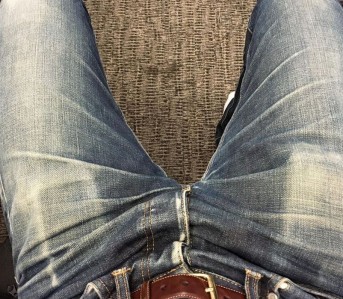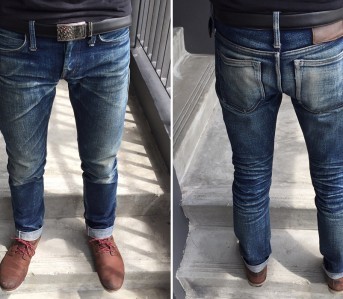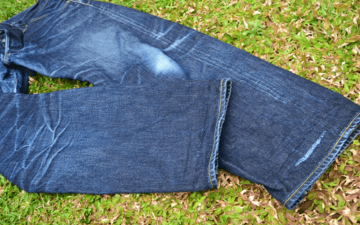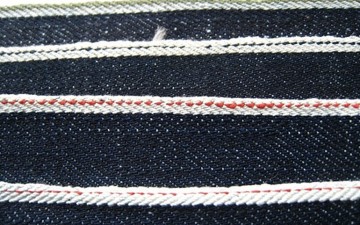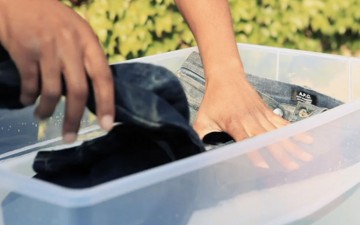Raw denim and quality clothing in general aren’t the most intuitive of subjects. If they were, there would be no need for sites like ours to exist. We do our best to cover a wide swath of the most common questions and problems facing denimheads today, but by no means do we cover it all.
That’s where Jean comes in, write in to our denim advice columnist for educated answers to your questions–denim, romance, or otherwise. If you have a question for Jean, ask it in the form at the bottom of the page.
Unclear Atomic Imports
Dear Jean,
I’ve got a concern about “made in Japan” products. As you guys already know, a few years ago, the nuclear power plant in Fukushima has been leaked. I read about radiation being easily stuck to the fabrics such as denim and they are nearly impossible to remove it.
Anyway, what I wanna know is this: do US or countries in Europe do radiation test before they import the fabric? And do mills like Kurabo, Nihon Menpu, Kuroki are safe from radiation? And also I want to know about your opinion about this situation. [sic]
Sincerely,
Nuclear Hinter
Hi there Hinter,
What befell the nuclear power plants at Fukushima in 2011 was a terrible tragedy and something that the Japanese nation will have to reckon with for decades, including in their exports. Japanese vegetables made headlines a month after the meltdown when they were deemed to have unsatisfactory levels of contamination, and more recently a sample of Japanese tea was found with trace levels of radiation in Hong Kong in March of this year.
The levels in the tea, however, were less than 1% the legal limit and very safe to consume. The amount of trace radiation that would make its way into jeans, however, would be even more negligible. Unlike the tea, nearly all the raw materials for the denim has been imported, so the only exposure it would have had would be during production process.
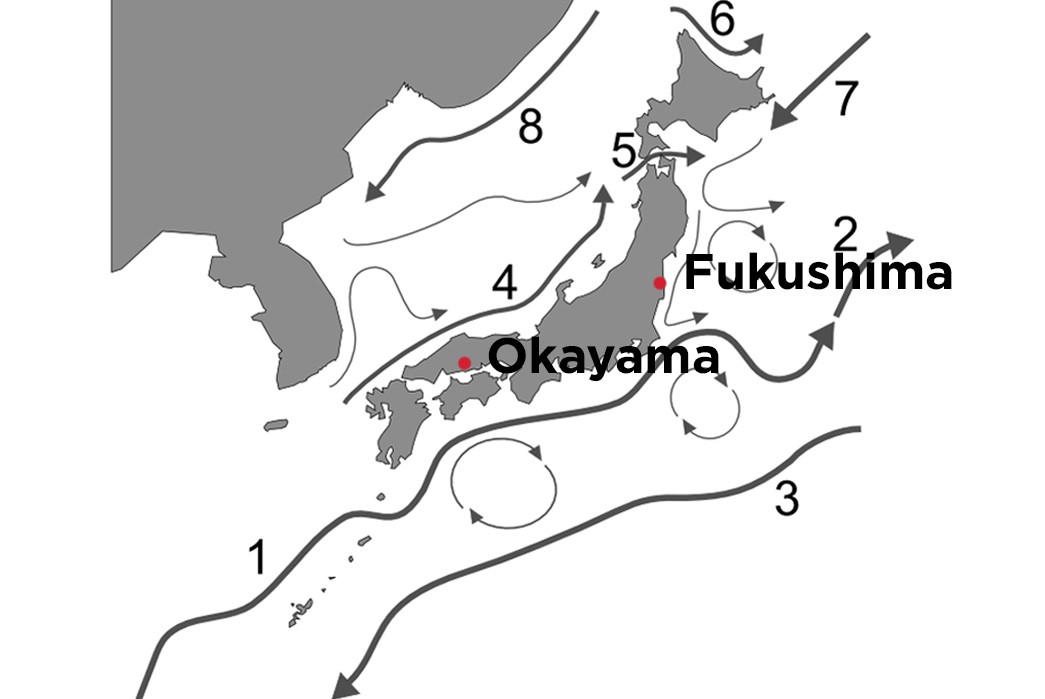
Ocean currents in Japan flow from west to east, moving any potential denim contaminants far into the ocean. Image via Wikipedia.
The mills that make the denim are also on the exact opposite side of the country, with Okayama in the west and Fukushima on the east coast. The natural currents around Japan also flow in the opposite direction, so even less exposure. And even if it were exposed, the jeans are being worn on your body and not consumed inside it, so you are at even less risk.
Furthermore, governments all over the world inspect all imports at the dock for radioactivity. Anything that pings the scanner never makes it inside the country.
So, no need to worry about radiation with Japanese imports, keep calm and keep wearing your jeans!
Wet Denim, What Do?
Dear Jean,
Hey guys what’s up? I’m from Indonesia and I just want to ask how to keep my denim dry when it’s raining season here in Jakarta. I always keep my denim in my room, and there is air conditioning, and I always turn it on. Do you have any suggest to keep my denim dry? Because it’s starting to get damp when I wear it.
Much love,
Moist Down Under
Dear Moist,
The rainy season affects us all in different ways, sorry to hear that it’s got your jeans all wet. The key to drying out anything is Surface Area. You want to have as much of the denim exposed to the air as humanly possible, the more they are crumpled up, the more difficult it will be for the water (*and other stuff*) to evaporate.
Try hanging your jeans up with a hanger between the back belt loops or even inside the waist band, make sure the denim has plenty of room to breathe and you can get a nice air flow from the waist all the way through the hems. That should have you feeling high and dry in no time!
It’s very important to keep your denim dry as much as possible. A perpetually wet pair of pants will mildew and mildew quickly.
Wrangling for Fabric
Dear Jean,
I’m wishing to have aprons made from a fabric similar to that of a Wrangler coverall I used to wear on the farm I grew up on. I called Wranger and got the White Oak name. I’ve owned/operated a pastry shop since 2003 and wish for those aprons to be worn by my counter staff team. I have some local connections that could sew the aprons we just have not been able to find the fabric. Please help….thank you!
Sincerely,
Swatching Out
Hi Swatching,
Sourcing high quality fabric can be one of the most difficult problems for hobbyists and small scale producers. Many of the best mills require fabric agents or prohibitively high minimums to directly get hands on their stuff, so what’s a non-industry person to do?
There are several online outlets that sell selvedge denim and other niche textiles, but purchasing fabric online can be like Forrest Gump’s proverbial box of chocolates. A few places I’ve had luck in buying by the yard have been Pacific Blue Denims and, surprisingly enough, Amazon.
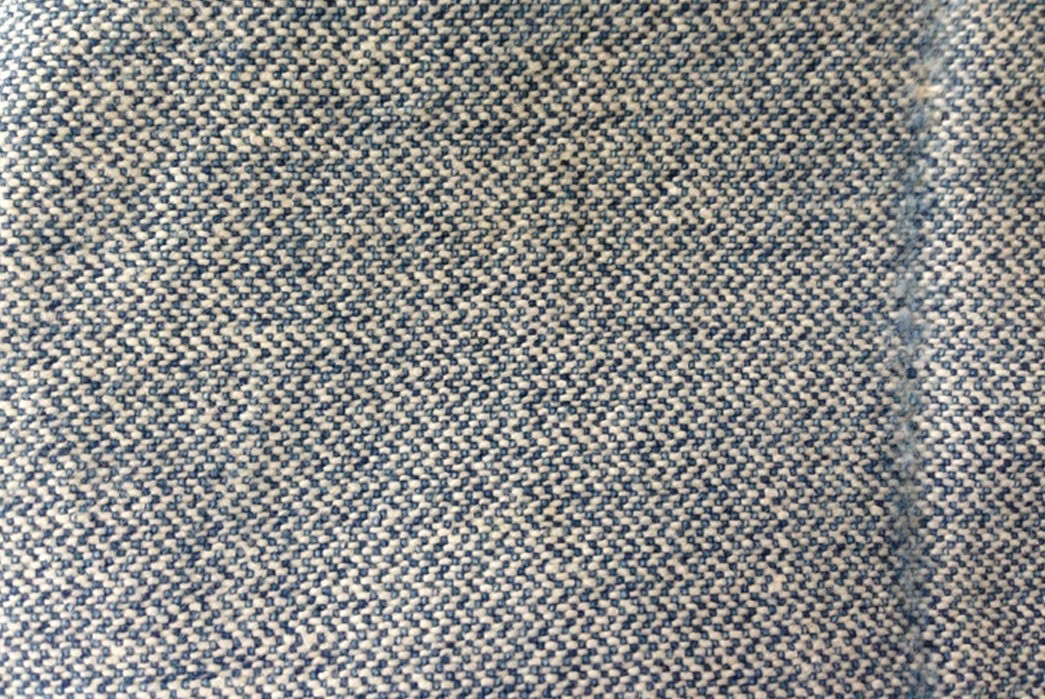
Weft of Wrangler’s broken twill denim. Image via Long John Denim Blog.
If you’re determined however, to get that old Wrangler “herringbone” look of broken twill denim, it looks like you can pick it up by the yard (albeit non-selvedge) here. Best of luck with the aprons!
The Semantics of Raw
Dear Jean,
Wasn’t sure the best place to ask this, and am sure you get this question a lot from the uninitiated, but in regards to raw denim and denim that is sanforized, wouldn’t the sanforization process make the denim no longer raw as it is then treated, sometimes chemically, but at the very least with water or steam?
Thanks,
Think to Fit
Yo Think,
The sanforized vs unsanforized debate is one that stretches back practically since the process was patented in the 1930s. Almost all woven textiles will shrink when they first hit water, and sanforization removes the majority of the shrinkage a fabric will have by hitting it with steam and hot rollers.
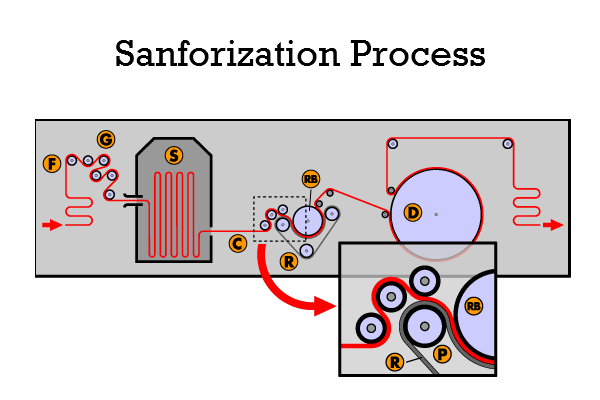
Pretend that red line is a blue piece of denim.
The steam bath simulates the first wash while removing minimal amounts of indigo, this means the jean that you buy will remain roughly the same size throughout its life. So you don’t have to worry as much about things like sizing up, leg twist, or a zipper fly going off track but they still have more than enough indigo to be raw.
Now this isn’t as “truly raw” as unsanforized (aka loomstate) denim, which literally comes straight off the line and is turned into jeans. Unsanforized jeans are often known as “Shrink to Fit” as they let you shrink your jeans to fit, which can allow for more experimentation and gives the wearer greater control of how they size. Unsanforized denim is also often rougher in appearance and has more rugged, contrasty fades in comparison to the same sanforized fabric, which often develops a semi-glossy patina.
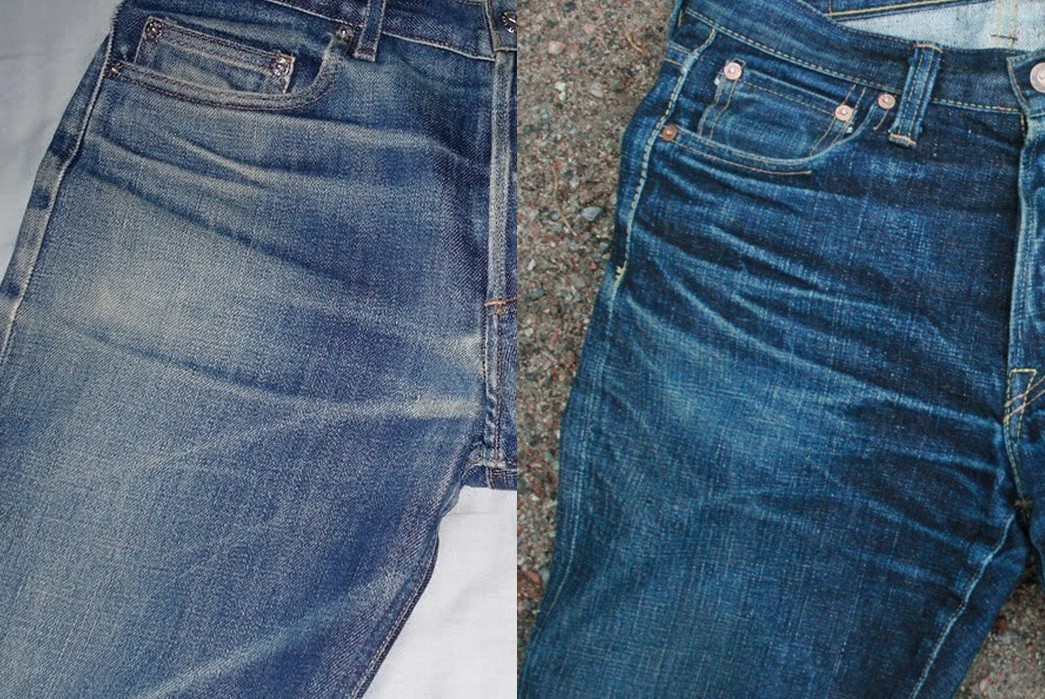
Sanforized denim fades (left) and unsanforized denim fades (right).
But to answer your question, yes, sanforized denim is still raw denim in our book.
Have a question for Jean? Let us know below:




